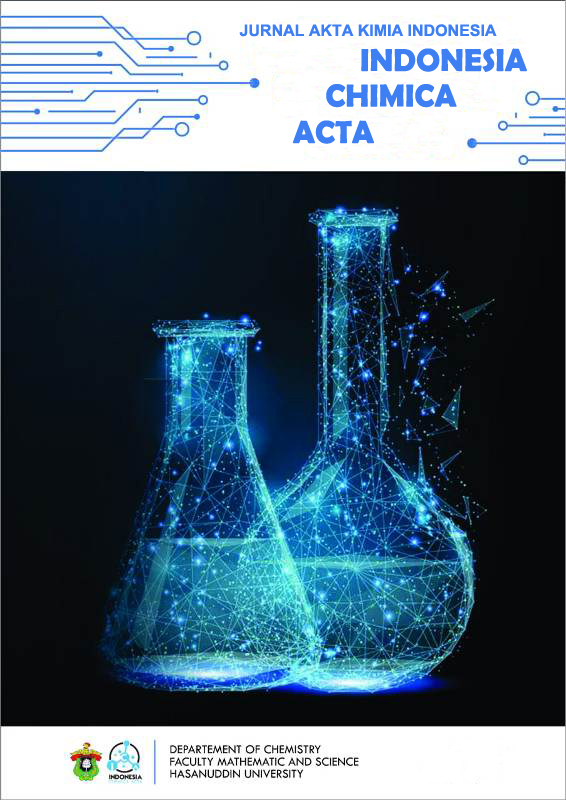Main Article Content
Abstract
Keywords
Article Details
References
- Al Jameil, N. 2014. Estimation of Serum Electrolytes in Diabetes Patients of Saudi Region. Life Science Journal. 11(7): 378-380.
- Anthony . 2004. Health Promotion and Health Education about Diabetes Mellitus, The Journal of the Royal Society for the Promotion of Health, 124 (2): 70-73.
- Cowie CC, Harris MI. 1995. Physical and metabolic characteristics of persons with diabetes, Diabetes in America, 2nd ed. National Institutes of Health. 1995, 117- 164.
- Hasdianah H. R, 2012. Mengenal Diabetes Melitus Pada Orang Dewasa dan Anak-Anak dengan Solusi Herbal. Nuha Medika, Yogyakarta.
- Hasona dan Elasbali. 2016. Evaluation of Electrolytes Imbalance and Dyslipidemia in Diabetic Patients. Medical sciences. 7 (4): 1-4.
- Hussain F, M Arif Maan, MA Sheikh, H Nawaz, A Jamil. 2009. Trace elements status in type 2 diabetes. Bangladesh Journal of Medical Science. 8 (3): 1-5.
- Kitabchi AE, Umpierre GE, Murphy MB, Kriesberg RA. 2006. Hyperglycemic crisis in adult patients with diabetes: A consensus statement from the American diabetes association. Diabetes Care. 29: 2739-2748.
- Tamsuri, Anas. 2009. Klien Gangguan Keseimbangan Cairan dan Elektrolit. Buku Kedokteran EGC, Jakarta.
- Upoyo, A. Muniroh. Maryana. 2015. Gambaran Elektrolit (Natrium–Kalium Serum) Penderita Diabetes Mellitus Di RS Prof Dr Margono Soekarjo Purwokerto. Jurnal Kesehatan Samodra Ilmu. 6(1) : 35-39.
- World Health Organization. Expert Committee on Prevention and Treatment of Diabetes Mellitus; WHO Technical Series No 844; World Health Organization: Geneva, Switzerland, 1994.
References
Al Jameil, N. 2014. Estimation of Serum Electrolytes in Diabetes Patients of Saudi Region. Life Science Journal. 11(7): 378-380.
Anthony . 2004. Health Promotion and Health Education about Diabetes Mellitus, The Journal of the Royal Society for the Promotion of Health, 124 (2): 70-73.
Cowie CC, Harris MI. 1995. Physical and metabolic characteristics of persons with diabetes, Diabetes in America, 2nd ed. National Institutes of Health. 1995, 117- 164.
Hasdianah H. R, 2012. Mengenal Diabetes Melitus Pada Orang Dewasa dan Anak-Anak dengan Solusi Herbal. Nuha Medika, Yogyakarta.
Hasona dan Elasbali. 2016. Evaluation of Electrolytes Imbalance and Dyslipidemia in Diabetic Patients. Medical sciences. 7 (4): 1-4.
Hussain F, M Arif Maan, MA Sheikh, H Nawaz, A Jamil. 2009. Trace elements status in type 2 diabetes. Bangladesh Journal of Medical Science. 8 (3): 1-5.
Kitabchi AE, Umpierre GE, Murphy MB, Kriesberg RA. 2006. Hyperglycemic crisis in adult patients with diabetes: A consensus statement from the American diabetes association. Diabetes Care. 29: 2739-2748.
Tamsuri, Anas. 2009. Klien Gangguan Keseimbangan Cairan dan Elektrolit. Buku Kedokteran EGC, Jakarta.
Upoyo, A. Muniroh. Maryana. 2015. Gambaran Elektrolit (Natrium–Kalium Serum) Penderita Diabetes Mellitus Di RS Prof Dr Margono Soekarjo Purwokerto. Jurnal Kesehatan Samodra Ilmu. 6(1) : 35-39.
World Health Organization. Expert Committee on Prevention and Treatment of Diabetes Mellitus; WHO Technical Series No 844; World Health Organization: Geneva, Switzerland, 1994.
